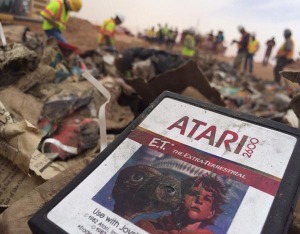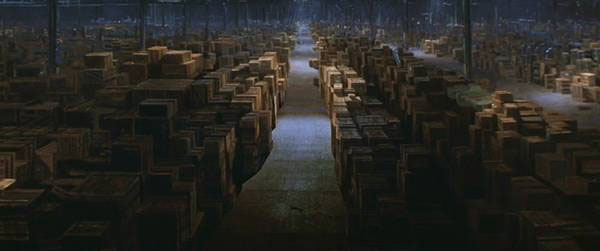
In Indiana Jones and the Last Crusade, our protagonist is on a boat somewhere off the coast of Portugal after tracking down a priceless artifact from no-good ‘Panama Hat’ (the name of the character in the credits, apparently his real name is unknown).
He’s almost thrown overboard but in typical Jones fashion, he manages barely escape with his life whilst clinging onto the ‘Cross of Coronado’ – safely delivering the relic to museum curator Marcus Brody.
What does Indy receive for nearly losing his life?
Satisfaction.
The relic happened to have been an important piece of his personal history, after nearly recovering it decades earlier as a child but eventually losing it.
A chip on his shoulder, he stopped at nothing to one day right the wrong, but rather than keep it for himself, he found much greater satisfaction in offloading it for public consumption in a museum.
The scene has got me thinking in respect to vintage and retro computers. From a personal perspective, the Apple //e computer that I’ve only recently recovered was my ‘Cross of Coronado’.
I distinctly remember traveling to the garbage tip with my dad around the turn of the millennium, the car loaded up with two Apple //e computers, an Apple Dot Matrix Printer, and several hundred disks (mostly copies).
Rather than lose these computers, I was foolish enough to be complicit in their destruction. I remember hauling one up and over my head, and throwing it as hard as I could against a nearby pile of garbage (certainly not hard enough to break it, but still quite satisfying for a 12-year-old.
I distinctly remember the plastic cover splitting and coming off the Apple Dot Matrix computer, I think it may have been even heavier than the computer itself.
It was only a few years later that I recall regretting that decision –
nostalgia creep had already set in. But it would be more than a decade before I could once again own one of these fantastic machines.

Finding the right computer to (re)purchase was an exercise in patience. There are many systems available on Ebay, however the prices in recent years are astronomical and frankly, not warranted. Complete systems can go for more than AU$500. Occasionally a machine will pop up on Ebay US or UK for cheaper, but the shipping cost is prohibitive.
I was lucky enough to find this machine for AU$200. It needed a repair and a polish, but it was complete. I didn’t even hesitate to let that money go, so strong was the power of nostalgia.
But unlike Indiana Jones, I can’t stand the thought of losing this machine to a museum. It’s mine, and it has a prized place on my desk, right next to my Windows 8.1 desktop computer.
All that is a roundabout way of asking the question – is there such a thing as computer archaeology? As demonstrated by the asking prices on Ebay, these machines are becoming rarer and rarer.
While there are examples out there of ‘computer history’ museums, are these little more than oversized personal collections?

I would like to think that I can contribute to our current and future understanding of the history of computing, much like a ‘computer archaeologist’. I see this contribution coming not from the size of the collection, but from the accessability of information regarding each item in the collection.
It should be available to the public, not just to satisfy nostalgia, but so that we don’t lose sight of where we have come. Early 8-bit and 16-bit computers are simply fascinating, and I want to give everyone the chance to see them as I do.
Unlike a physical piece of history, there are other options when it comes to analysing the history of computers. Organisations such as the Internet Archive are dedicated to the goalof preserving computing history. They made the news several months ago after they made several thousand video games available on their site – all for free.
Emulators fill an important purpose in the preservation of computing history too, it’s never been easier to run vintage software on virtually any modern platform.
What does all this mean? I really do not know, this post kind of got away from me.
I suppose in summary – vintage and retro computers shouldn’t be locked up in the basements and warehouses of a handful of collectors. I do not wish to become another example of this, but I’m not really sure how to avoid it.
I could certainly give this computer away to a museum, but even if there was a local example nearby, I would be reluctant to let it go.
Perhaps I’m not Indiana Jones after all.